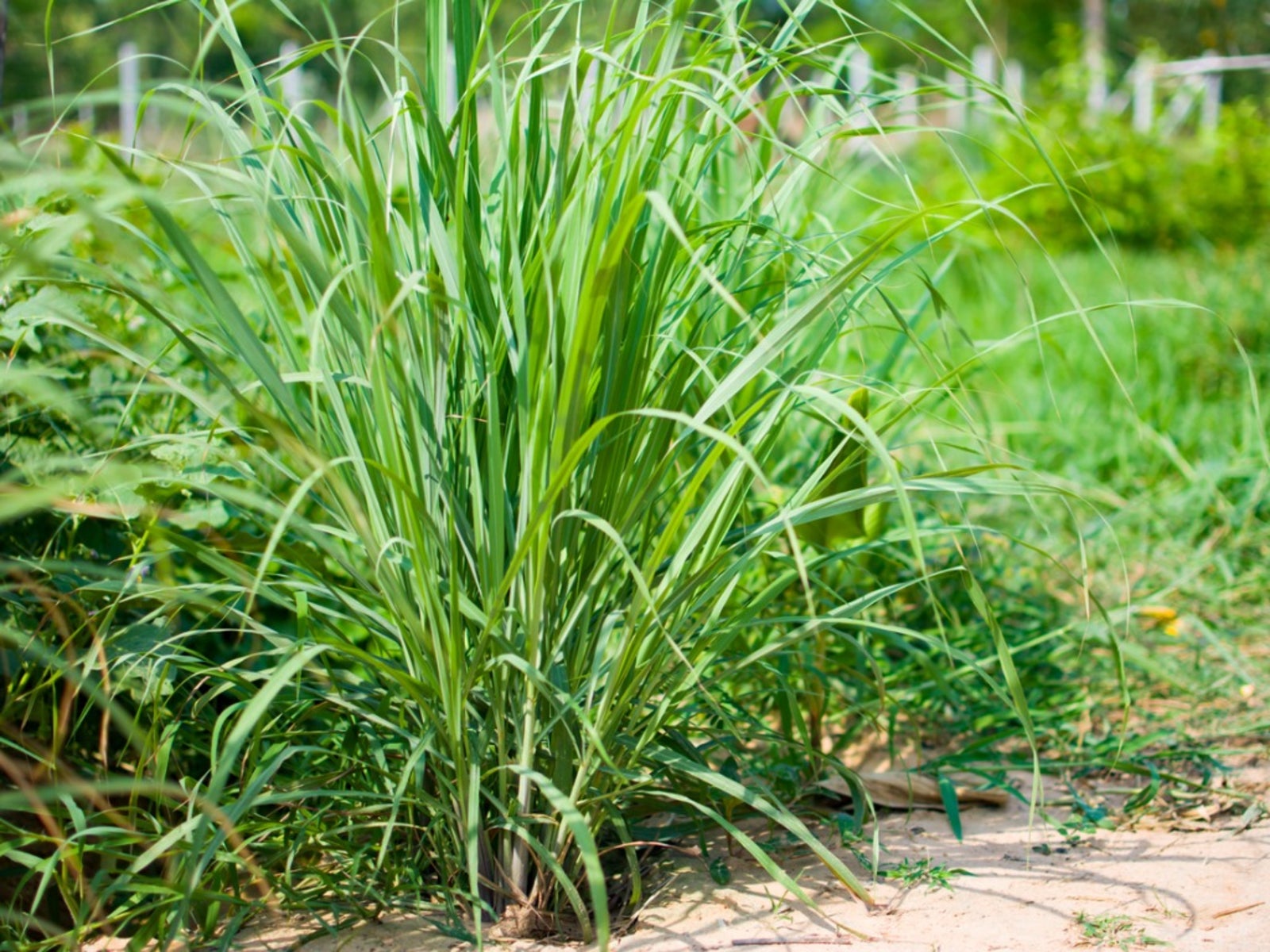
Lemon Grass
Botanical Name: Cymbopogon flexuosus
Family: Graminae
Plant Part Used: Leaves
Types of Lemon Grass
- East Indian Lemon Grass (C. flexuosus) – Grown commercially in Kerala and nearby states, its oil is known as “Cochin oil.” 90% of the oil is exported.
- West Indian Lemon Grass (C. citratus) – Originates from Malaysia and Sri Lanka, cultivated in West Indies.
- Jammu Lemon Grass (C. pendulus)
India’s Production & Export:
- India produces nearly 1000 MT of lemon grass oil annually, with exports worth approximately Rs. 5 crores.
- Faces competition from Guatemala in the international market.
Uses of Lemon Grass
- Oil Constituents: Citral, which is used for ionone production.
- A-Ionone: Used in flavors, cosmetics, and perfumes.
- P-Ionone: Used in the manufacture of synthetic vitamin A.
- Medicinal Uses: Bactericidal, insect repellent.
- Animal Feed: Spent grass can be used as cattle feed and silage.
- Paper & Fuel: Used for cardboard, paper manufacturing, and as fuel.
- Culinary Uses: Used in beverages, dairy products, candies, baked goods, gelatin, pudding, and meat products.
- Industrial Uses: Used in soap and detergent manufacturing.
Climate & Soil
- Climate: Tropical, warm and humid with 250-280 cm annual rainfall. Day temperature of 25-30°C is optimal for oil production.
- Soil: Can grow in poor soils, including hill slopes. Prefers soil with pH 4.5-7.5.
- Soil Conservation: Useful for soil binding in eroded areas.
Varieties of Lemon Grass
East Indian Lemon Grass Varieties
- Sugandhi (OD-19) – Developed by The Medicinal and Aromatic Plants Research Station, Odakkali, Kerala.
- Herbage yield: 50-55 t/ha
- Oil yield: 80-85 kg/ha
- Oil recovery: 1.2-1.5%
- Citral content: 80-85%
- SD-68 – Developed by CIMAP, Lucknow.
- Oil yield: 375 kg/ha/year
- Citral content: 90-92%
- Pragati (LS-48) – Developed through clonal selection from OD-19 by CIMAP, Lucknow.
- Oil content: 63-86% citral
- Kavery
- Krishna
Jammu Lemon Grass Varieties
- RRL-16
- Praman
- VKP-25
- Chirharit
Propagation Methods
- Seeds
- Slips (Vegetative Propagation) – Commonly used in Andhra Pradesh.
Seed Propagation (Nursery)
- Seed Collection: January-February.
- Sowing Time: April-May.
- Seed Rate: 10 kg per 25 cents nursery per hectare.
- Nursery Preparation: Seeds are sown in beds and lightly irrigated.
- Seedling Readiness: 60-75 days, at 5-7 leaf stage and 12-15 cm height.
Slip Propagation
- Mature clumps are divided into slips.
- Slips are treated for rooting before planting.
- Rooted slips are used for field propagation.
Field Preparation
- Land Preparation: Land is cleared, and pits of 5 cm cube are made.
- Layout: Ridges & furrows.
- Planting Season: June-July.
- Spacing: 60 x 45 cm.
- Planting Method: 2-3 slips per hill.
Manures & Fertilizers Recommended Dose: 100:50:50 NPK kg/ha.
Irrigation
- Irrigation is required only in low rainfall areas.
- Schedule:
- Daily for the first month.
- Once every 7-10 days thereafter.
Harvesting of Lemon Grass
- First Harvest: 90 days after planting.
- Subsequent Harvests: Every 50-55 days.
- Cutting Height: 10 cm above ground level.
- Harvest Cycles: 5-6 harvests per year.
- Crop Longevity: Can be maintained in the field for 5-6 years.
Yield & Oil Extraction
- First Year Yield: 25 kg oil/ha/year.
- Second Year Yield: 80-100 kg oil/ha/year.
- Rainfed Conditions: 80-100 kg oil/ha/year.
- Irrigated Conditions: 150-200 kg oil/ha/year.
- Oil Extraction Method: Steam distillation.
Oil Constituents Citral Content: 80-85%.

